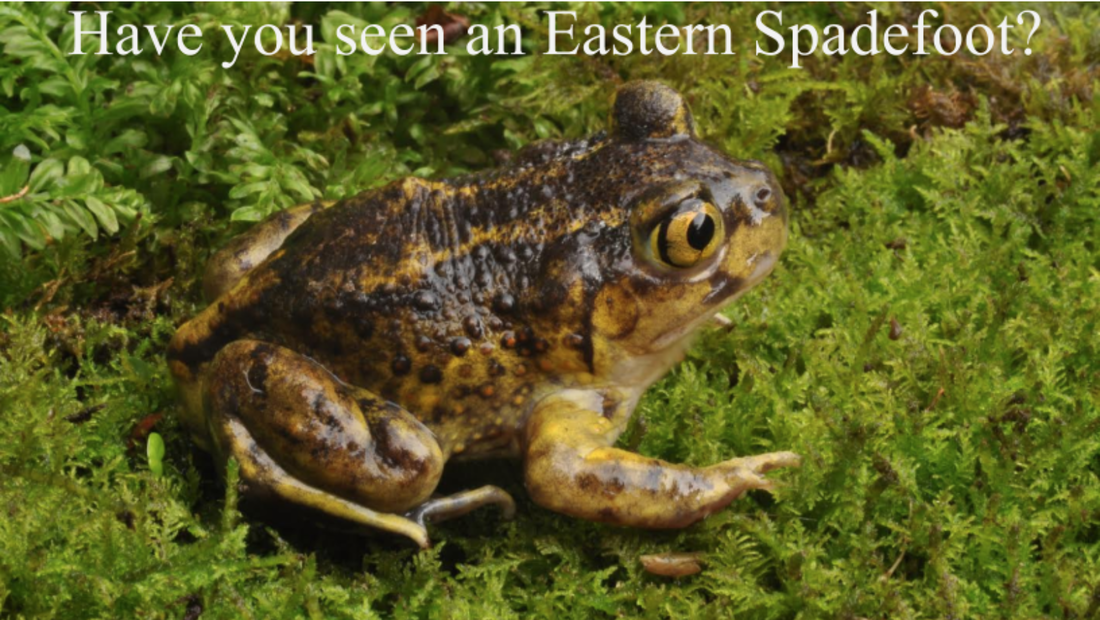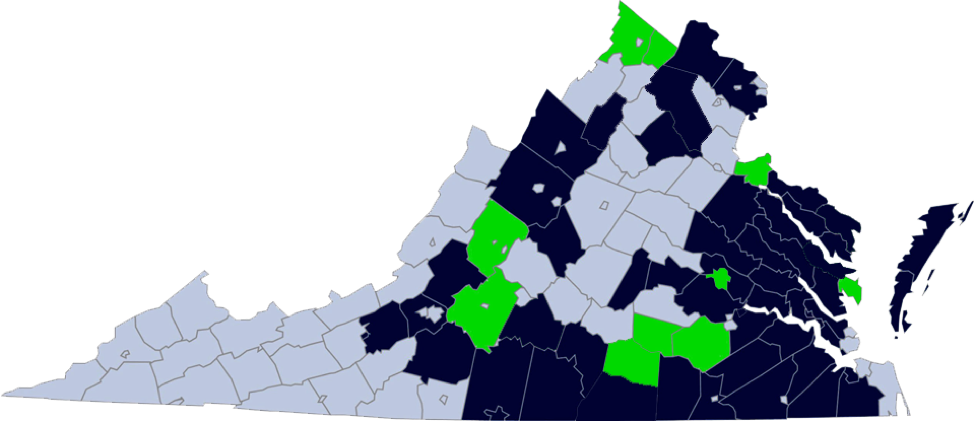This is an update on a project we have written about previously.
Virginia Master Naturalist and public help is requested for an ongoing study of Eastern Spadefoot toads in Virginia. Very little is known about the distribution and habits of this species in Virginia. Researchers think this frog is more common and more widespread than what is currently known. This is why they are seeking help in increasing knowledge about this secretive frog.
Identifying characteristics include:
For more pictures of Eastern Spadefoots and look-alike toads, visit the Virginia Herpetological Society website. You can also listen to recordings of their calls there.
Places to Look and Listen
When to Look
How Can You Assist in This Project?
If you make any observation of an Eastern Spadefoot, then take several digital photos of it from side view and a back view. You may also digitally record it calling. Please send digital photos, recordings, or any observation (including location information) to Jason Gibson at Patrick Henry Community College and Travis Anthony at Reynolds Community College.
This project is a collaborative project of Patrick Henry Community College, Reynolds Community College, the Virginia Herpetological Society, and the Virginia Department of Game and Inland Fisheries.
Virginia Master Naturalist and public help is requested for an ongoing study of Eastern Spadefoot toads in Virginia. Very little is known about the distribution and habits of this species in Virginia. Researchers think this frog is more common and more widespread than what is currently known. This is why they are seeking help in increasing knowledge about this secretive frog.
Identifying characteristics include:
- Vertical oriented pupils
- Brownish colored body (the color is highly variable)
- Two yellow lines running along the back
- 2-3 inches long
For more pictures of Eastern Spadefoots and look-alike toads, visit the Virginia Herpetological Society website. You can also listen to recordings of their calls there.
Places to Look and Listen
- Roads near wetlands
- Vernal pools (temporary bodies of water which dry up by the end of the summer)
- Ditches
- Swimming pools
- Flooded agricultural fields
When to Look
- After heavy rains, perhaps during any month of the year
How Can You Assist in This Project?
If you make any observation of an Eastern Spadefoot, then take several digital photos of it from side view and a back view. You may also digitally record it calling. Please send digital photos, recordings, or any observation (including location information) to Jason Gibson at Patrick Henry Community College and Travis Anthony at Reynolds Community College.
This project is a collaborative project of Patrick Henry Community College, Reynolds Community College, the Virginia Herpetological Society, and the Virginia Department of Game and Inland Fisheries.




 RSS Feed
RSS Feed